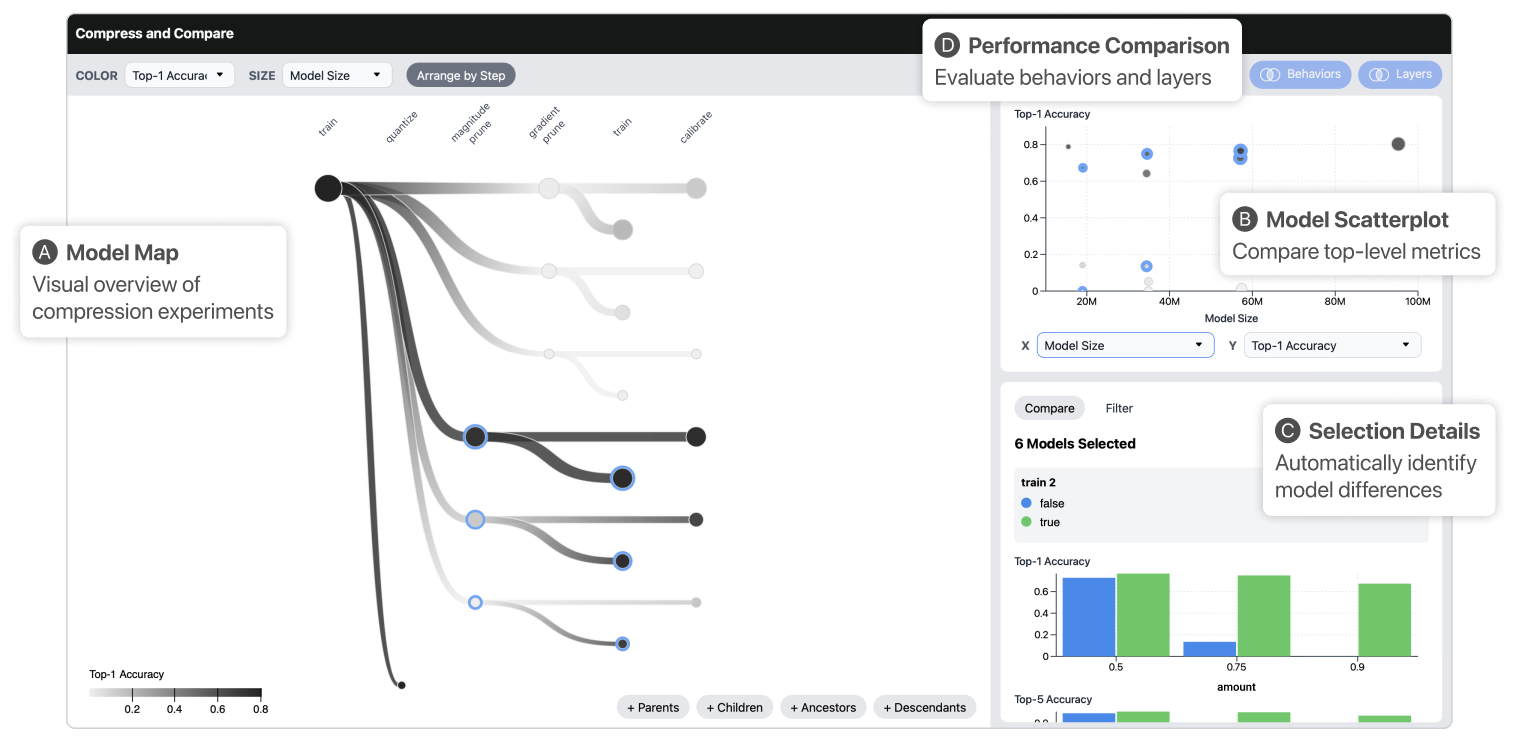Compress and Compare: Interactively Evaluating Efficiency and Behavior Across ML Model Compression Experiments
Published at
VIS
| St. Pete Beach, Florida
2024

Abstract
To deploy machine learning models on-device, practitioners use compression
algorithms to shrink and speed up models while maintaining their high-quality
output. A critical aspect of compression in practice is model comparison,
including tracking many compression experiments, identifying subtle changes in
model behavior, and negotiating complex accuracy-efficiency trade-offs. However,
existing compression tools poorly support comparison, leading to tedious and,
sometimes, incomplete analyses spread across disjoint tools. To support
real-world comparative workflows, we develop an interactive visual system called
Compress and Compare. Within a single interface, Compress and Compare surfaces
promising compression strategies by visualizing provenance relationships between
compressed models and reveals compression-induced behavior changes by comparing
models' predictions, weights, and activations. We demonstrate how Compress and
Compare supports common compression analysis tasks through two case studies,
debugging failed compression on generative language models and identifying
compression artifacts in image classification models. We further evaluate
Compress and Compare in a user study with eight compression experts,
illustrating its potential to provide structure to compression workflows, help
practitioners build intuition about compression, and encourage thorough analysis
of compression's effect on model behavior. Through these evaluations, we
identify compression-specific challenges that future visual analytics tools
should consider and Compress and Compare visualizations that may generalize to
broader model comparison tasks.